Roger Alaska is an American Expat Living in Puerto Vallarta Mexico
Roger Tells Us About His Now Closed Restaurant, Alaska’s Diner and Running a Business in Vallarta
Hints For Canadians Traveling to Puerto Vallarta During The Pandemic
Listen to The Podcast
Subscribe in Apple Podcasts
Subscribe On Android Devices
Send Barry an Email

Hello fellow travelers, welcome this episode of the Puerto Vallarta Travel show. I am your host Barry Kessler and I am just so happy to be introducing you to my favorite vacation destination, and maybe even yours, Puerto Vallarta Mexico.
Subscribe in Apple Podcasts & Leave a Good Review
Subscribe On Android Devices
Send Barry an Email
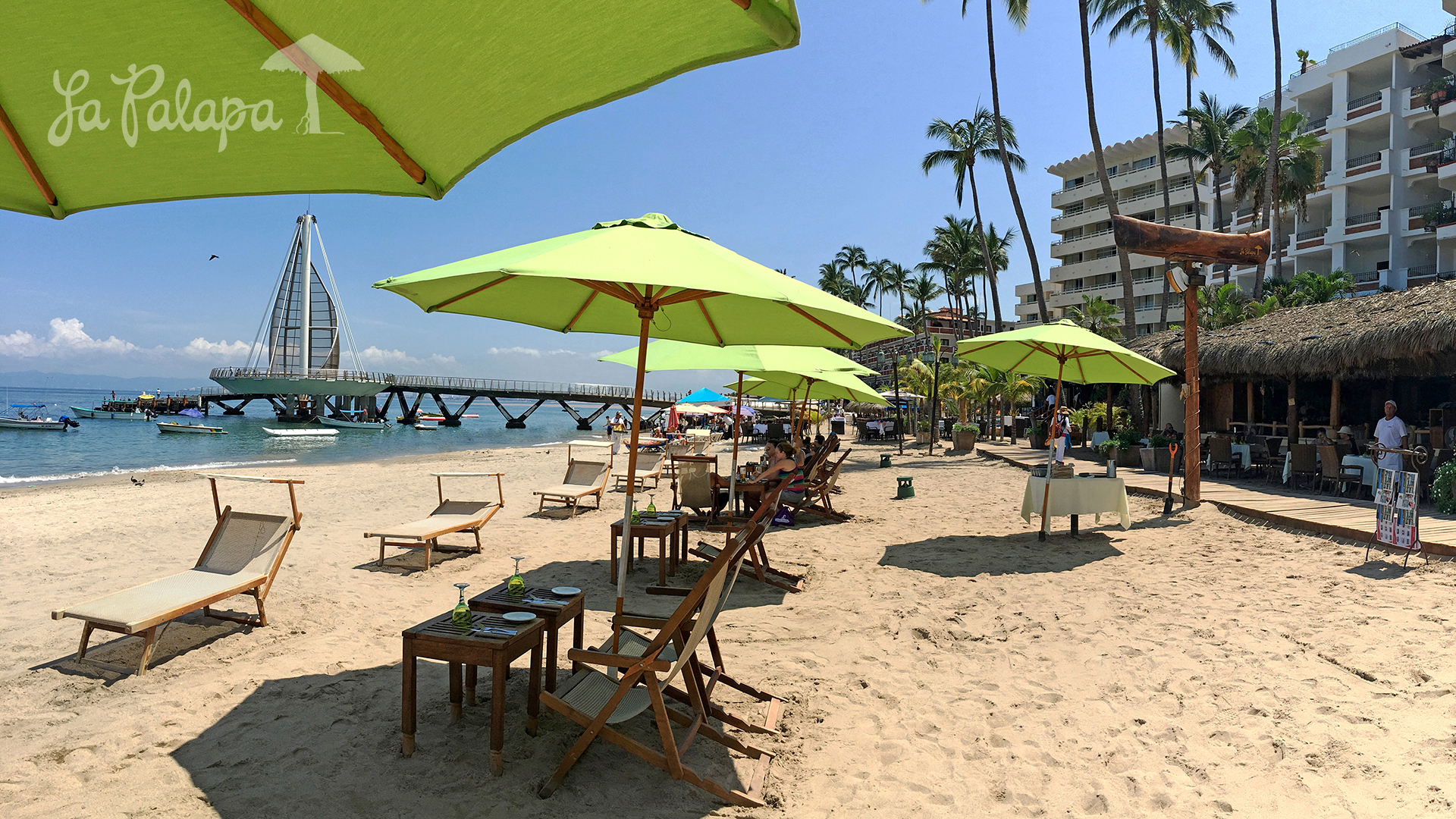
That music you were just listening to is performed by Alberto Perez, the owner of the La Palapa Group of Restaurants. Those are La Palapa, Puerto Vallarta’s Oldest Restaurant on the famous Los Muertos Beach, and The El Dorado Restaurant and Beach Club right next door so you can enjoy that fantastic view of the Los Muertos Pier all lit up at night in beautiful colors, or during the day in its grand splendor for breakfast, lunch or dinner, seated with your toes in the sand right at the water’s edge. It’s so romantic, it’s so, Puerto Vallarta my friends.
This week we are going to visit my buddy Roger Alaska, and Roger used to own a restaurant in Vallarta called Alaska’s Diner. Roger has some great stories to tell, but before we get to Roger, let’s see what’s happening in Puerto Vallarta this week, the 5th of March, 2021.
Semana Santa Has Ben Cancelled Again Due to The Pandemic
Here’s the report sent to me by Salvador the Candyman on the Malecon…from Vallarta en lina
For the second year, RESTRICT Easter: NO ANTROS, no parties, limited beaches
Vallarta Port
The Jalisco Government Health Board decreed new restrictive measures aimed at protecting the health of the population from the COVID-19 pandemic, and which will take effect during the Easter holiday period that is about to begin.
It is about restricting the hours on the beaches of the entire state, including Puerto Vallarta. So there will only be access to these from 5 in the morning to 5 in the afternoon.
In addition, the cancellation of all mass pilgrimages or customary religious or patron saint festivals is again ordered.
Also, restaurants and bars are instructed to close at 11 at night and keep the capacity limited to 50% with social distancing between customers.
Likewise, clubs and nightclubs, as well as bars at night or casinos on a night shift in will not be able to provide their services, so again, they will have to stop operating.
This is the second year that the festivities are canceled at Easter. Last year, when the pandemic practically began, there was no tourism as the authorities ordered a total quarantine and asked travelers not to leave home.
Now, given the recovery period, the arrival of abundant tourism to Puerto Vallarta is expected, however the impact on travel intentions that these new restrictions may have is unknown.
Currently clubs and bars can open and the beaches are not limited. Since, as promised by the governor of Jalisco, Enrique Alfaro, there would no longer be any more emergency buttons and restrictive measures would only be applied on special dates, which are Easter, Mother’s Day and the elections, announcing them well in advance .
As soon as Easter is over, the restrictions will be lifted.
Because….science…
I have a link to that uplifting story from Vallartaenlina in the shownotes and thanks to Salvador for sending me that link. I think.
Por segundo año, RESTRINGEN Semana Santa: NO ANTROS, no fiestas, playas limitadas
Canada Travel and Ideas to Ease the Pain
Over the last few weeks we have been talking about new rules for travel from Canada to Mexico. That all Canadian airlines agreed to stop flying to Sun Destinations as they call them. That Canadians returning to Canadia are required to have proof of a negative PCR test upon arrival in Canada. That they must submit to another test upon arrival and wait up to 3 days in one of a handful of detention hotels, set up with security so you are properly locked down. Three squares a day are delivered to your room every day, probably slid under the door…all that for about $2,00 or so. Then, once you are cleared as per your PCR test, you mosey on home to finish your 14 day quarantine.
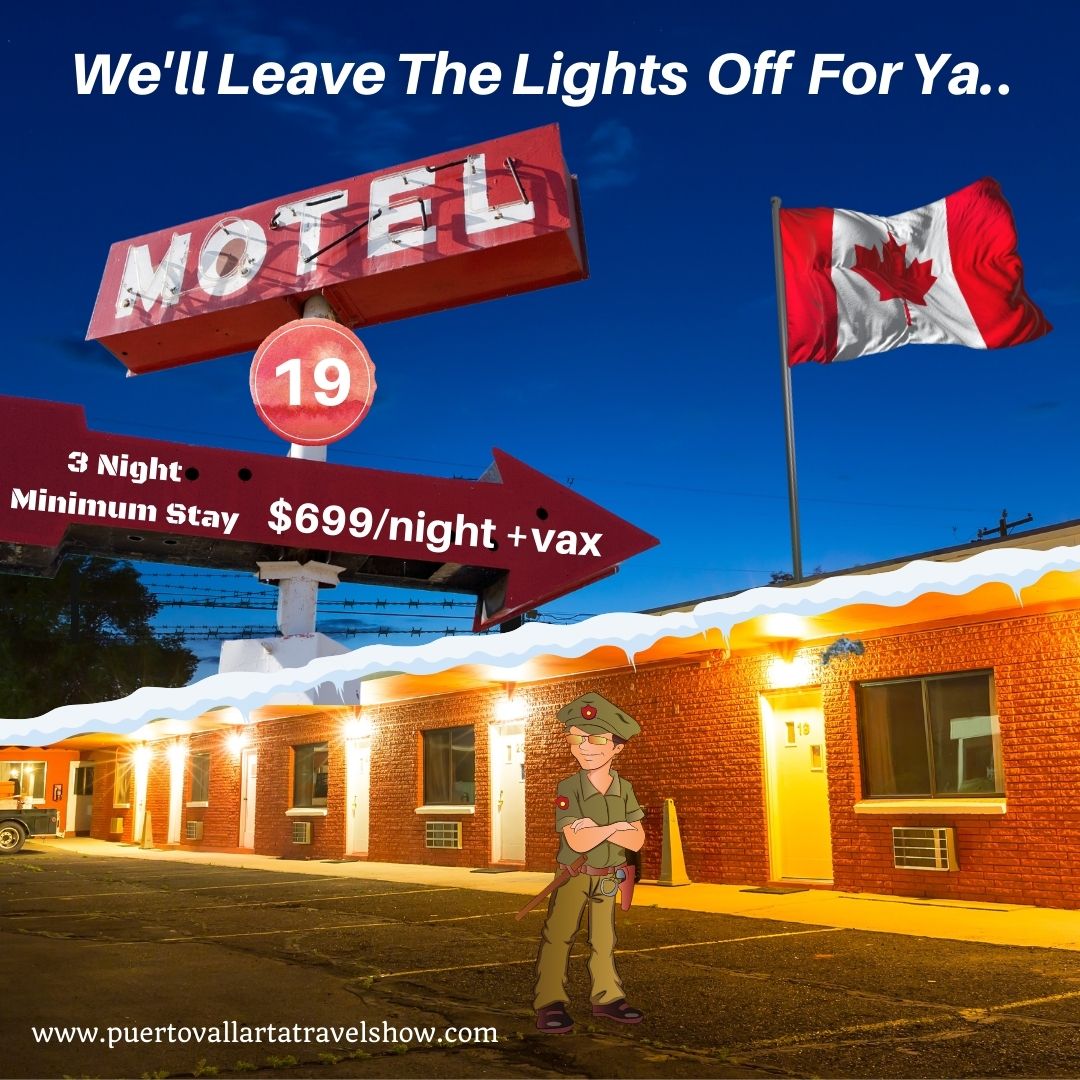
Last week I told you that it was getting cheaper for Canadians to dare travel to Puerto Vallarta. I mentioned the price for the stays at Canadias new Motel 19 were cheaper than the $2,000 Canadian dollarettes predicted by prime minister Trudeau, as cheap as $319 a night for a single plus taxes.
Remember I said stay tuned and see if it gets cheaper? Here goes….
First, a great suggestion from a Canadian traveler……
Tip for Canadians returning to Canada by air and staying in the government approved hotels:
Book your three nights as three separate one night bookings instead of a single booking for three nights. If you book it as a single booking and check out early they will NOT refund the extra days. I overheard a guy in line ahead of me at the airport saying he’d booked three separate nights and the customs agent accepted that. If you book separately you might have more luck with paying only for the nights you stay.
I got my Covid test after my arrival and my results were available in less than 24 hours. I stayed 2 nights just because it is convenient for my ride home to pick me up today but could have checked out after one night. And I’m paying for three.
So that is a great suggestion, another one I found where people are just walking through, bypassing the Motel 19, and opting for the fine which is just a fraction of the price and hassle of staying in a veritable jail cell…here’s the story…from Insagua.com….
International travelers arriving at Mississauga’s Pearson Airport are bypassing new government hotel quarantine protocols by simply walking out of the airport or by choosing to take a fine.
Peel Police have confirmed they are not detaining or arresting people who leave the arrival area. As well, others who refuse to take the mandatory COVID-19 test or book the quarantine hotel upon arrival, are opting to receive a fine that is cheaper than the quarantine cost and then are released to go home. The fines are usually in the $820 range while staying at an approved quarantine hotel could cost up to $2,000.
Incoming travelers to the airport told insauga.com that on Monday, several people just walked out of the arrival area after discussions with police and airport officials when they were confronted with the new rules now in place that call for the testing and quarantine.
When asked, Peel Police said there were several instances of non-compliance with the new regulations on Monday but that a majority were resolved after discussions with the people in question. Some issues of non-compliance resulted in the issuance of fines and other enforcement activity.
Police went on to say that unless there are serious aggravating circumstances involved, such as an offence under the Criminal Code, or any other demonstrated behavior that places the individual or public in danger, they will not detain individuals who are non-compliant.
The new rules that came into effect yesterday call for residents flying back into Canada to show a negative COVID test result before they board the plane and take another test when they arrive.
After the second test, residents will have to wait at an approved hotel for their test results.
If a person’s results come back negative after three days, they will be able to quarantine at home for the full 14 days and the quarantine will be mandatory and enforced. Anyone who tests positive for COVID-19 will be required to immediately quarantine in designated government facilities.
Canadian government officials said those who leave the airport without taking the test or quarantining at an approved hotel, who aren’t otherwise fined, will be liable for a follow-up investigation and could face hefty penalties.
So check out the shownotes if you want to share that story with your friends and family.
Time marches on and the legalization of the hippy lettuce should be coming soon to Mexico. And listener and contributor extraordinaire James, sends me this article…
From the Daily Beast….I’ll read you parts of this article and I’ll link it in the show notes, and hey, I’ve gotten some complaints that I talk about weed too much on the show. Remember when I talked about the guys on the Malecon around the tale park selling cigars, pipes, weed, hookers and blow? Yeah, some of you wrote me and complained. Look, I don’t want to sound rude or anything but here’s where if you are one of those complainers, here’s where the fast forward button works for you on your podcast app. Use it.
The Sinaloa Cartel Is Setting up Front Operations to Hijack Mexico’s New Legal Pot Market
Cartel farmers tell the Daily Beast they are importing stronger—more lucrative—strains of marijuana to sell in the legal market and maximize profits through front operations.
Luis Chaparro
Updated Jan. 26, 2021 10:11AM ET / Published Jan. 26, 2021 5:07AM ET
CULIACAN, Mexico—It’s considered the most powerful criminal organization in the Americas, if not the world. But now the brutal Sinaloa cartel is preparing to go legit—and make millions of dollars through front organizations in Mexico’s new legal pot industry.
Cartel operatives told The Daily Beast they hope to transit from the illegal market to the multi-million-dollar legal weed market as soon as Mexico passes reform to legalize marijuana for adult use. Proponents of the drug reforms had hoped legalizing sale of the narcotics would take the profits out of the hands of killers and criminals, but members of the Sinaloa cartel are already working on infiltrating the legal market.
The result could be even greater profits for the gangland bosses—to spend on weapons, buying off politicians and growing their criminal empire. For legitimate businesses preparing for legalization of marijuana, which is expected to pass later this year, there is now the alarming prospect of competing with the cartels.
One of the first changes as the Sinaloa cartel prepares to compete on the open market is the introduction of much more powerful marijuana. Mexican farmers working with the Sinaloa cartel in remote areas told the Daily Beast, they are already dropping the old techniques and adopting a sophisticated process that includes genetically modified crops and fertilization systems to produce more potent weed.
Some inside the Sinaloa cartel are exploring ways to set up legal shops under front men, according to cartel members. Inevitably some of the more powerful crop could also end up on the black market or smuggled into the U.S.
“We are now leaving the old Mexican marijuana aside. Our bosses brought new seeds from Germany for us to grow a better quality weed and ordered to start harvesting this new weed strain,” said a Sinaloa cartel farmer interviewed by The Daily Beast.
According to the farmer the plan for the Sinaloa cartel is to start “experimenting” with advanced techniques and top-notch seeds to be ready to “deliver paperwork” as soon as Mexico passes it’s new law and—using front operations—make out they have never been in the illegal market.
Mexico’s Senate passed a bill in late November legalizing recreational use of marijuana, but lawmakers in the lower house stalled it while trying to raise the amount of pot consumers may carry in public over the actual proposed limit of 28 grams.
The bill to legalize adult weed is currently waiting for approval from the lower house, with the deadline set for April this year.
In January, Mexico’s health ministry published rules to regulate the use of medicinal cannabis, a huge step to create the largest legal weed market in Latin America.
The new law sets rules for cultivation and harvesting of cannabis for medicinal purposes, which would allow businesses to grow marijuana legally on Mexican soil.
This is where some drug cartel members want in.
“The bosses are ready with lawyers and everything. They have been watching closely the development of weed legalization and are ready to establish a legal business,” the pot farmer said.
Another man allegedly in charge of the crops said they will still have “cheap marijuana” harvests, but mostly for local distribution.
“Our weed is getting stuck in stash houses in the U.S., it’s not selling as before. We still sell, but not as much as before since they legalized it in some places. But we are trying to make a more potent weed, more kicking, to sell in Mexico and in the U.S., wherever they want it,” the cartel operative said.
Although there is still U.S. demand for Mexican weed, seizures at the border have been dropping steadily since 2015, according to Customs and Border Protection stats.
While in 2015 the U.S. seized more than 600,000 pounds of weed at the border, 5 years later, in 2020 the number of pot seizures dropped to less than half, down to 290,000.
The Sinaloa cartel members interviewed on the outskirts of Culiacan are taking care of an unusual marijuana crop: 8,000 square meters (50 acres) under a greenhouse roof with an irrigation and fertilization system.
“This was not usual before. Here in the mountains the weed grows by itself, but this is different”, said the farmer.
This scenario has become more and more common in northern Mexico, a change from the traditional outdoor cultivation.
The farm is in the middle of nowhere, surrounded by a deep forest. The farmers have cut out the trees surrounding the field to leave room to install a metal structure as a roof from where the halogen lights hang.
Inside, the smell of fresh weed and some citric terpenes—reminiscent of citrus fruit—fills the whole greenhouse. This looks nothing like the average illegal field in Mexico.
These new strains, unlike the traditional varieties, don’t rely on sunlight. The halogen lights vary from cold to warm temperatures, depending on the stage of growing and remain on 24/7.
In 2010, the Mexican Army found a similar greenhouse containing more than 20,000 marijuana plants. Years later, inside a building in Culiacan, authorities seized another greenhouse with more than 600 plants. In 2015, another sophisticated greenhouse was found in Guadalajara, Jalisco.
“We are learning. We bring the equipment from the U.S. and most of the seeds from Europe and also from the U.S., like the California Dream. These new plants are more potent, they test up to 60 to 70 percent THC, as compared to the 5 or 8 percent in the Mexican one,” said the farmer.
What the Sinaloa cartel is planning might not be too far from the general idea behind the bill to legalize marijuana.
The war on drugs has left hundreds of thousands of victims, and the new approach is designed to reduce the violence of the cartels, according to Zara Snapp, co-founder of RIA Institute, a Mexican research and advocacy organization.
“What this new bill is trying to do is to have the people, groups or organizations that have participated in an illegal market, to transit into the legal market. If there are groups trying to transition, that’s great. Thats the whole point,” said Snapp.
She insisted that the plan wouldn’t grant any immunity to criminal organizations or individuals just because they were also selling legal drugs.
“If these groups or organizations are still participating in illegal activities—like the use of unauthorized guns—the Mexican government has the responsibility to act against them,” she said.
But realistically the cartels are not planning to go straight—the murders, blackmail and lawlessness will continue—they are simply demanding their slice of a more profitable market. While an average price for a pound of “Mexican brick” pot is around $500, a higher strain could be up to $2,500 per pound, according to U.S. official statistics.
Mexican Senator Julio Menchaca, co-author of the bill, said regularizing cannabis in Mexico would be a “big hit” to the cartels.
“This is an opportunity to pacify the country, since the production of this plant has built mafias with a huge economic power that has caused Mexico a lot of violence”, he said in an official statement.
But cartel members are not so sure they will stop operating on the illicit market.
“The group has a lot of other activities. We have to, in order to survive. It is still not sure if weed is going to get legal in Mexico and we can’t stay waiting for that to happen”, said the Sinaloa operative.
One thing is for sure: Mexican cartels will try to be in the game. While it seems like a good idea on paper, “pacifying” the country does not seem that easy. The cartels in Mexico have gained most of their power not by selling weed, but by showing off their violent and ruthless hunger for money.
“If we started it all with our Mexican weed, how would we stay out of it? I don’t think so,” said the Sinaloa farmer.
And I have a link to the article in the shownotes…
You know…I seem to remember guys like Former Mexican President Vicente Fox, and big mobile phone giant Carlos Slim were jockeying for position in the legal pot trade in Mexico, you know…to make it look legitimate like in the US and Canadia where the government either has their own stores like in Canada, or where the states collect oodles of taxes from the pot shop customers. In the US. However, in Mexico, it looks more like the cartel is looking to get the upper hand. At least good weed is on the way!
Last week we talked about the Vallarta sunsets and why they are the way are, air pollution. I also talked just briefly about how a special stove an estufa in Spanish. Estufa is the word for stove and the project is put on by UNAM and it’s called Estufa Patsari, and these stoves have been introduced into homes and communities and the improvement of health and air quality is stunning. I don’t have time to talk about the project this week, but next week we will.
Let’s get to our interview shall we?
Having Fun in Puerto Vallarta With Roger Alaska

I love to talk with people who have literally left behind their lives in the US or Canada and planted themselves in Paradise. It’s because deep inside I would love to do the very same
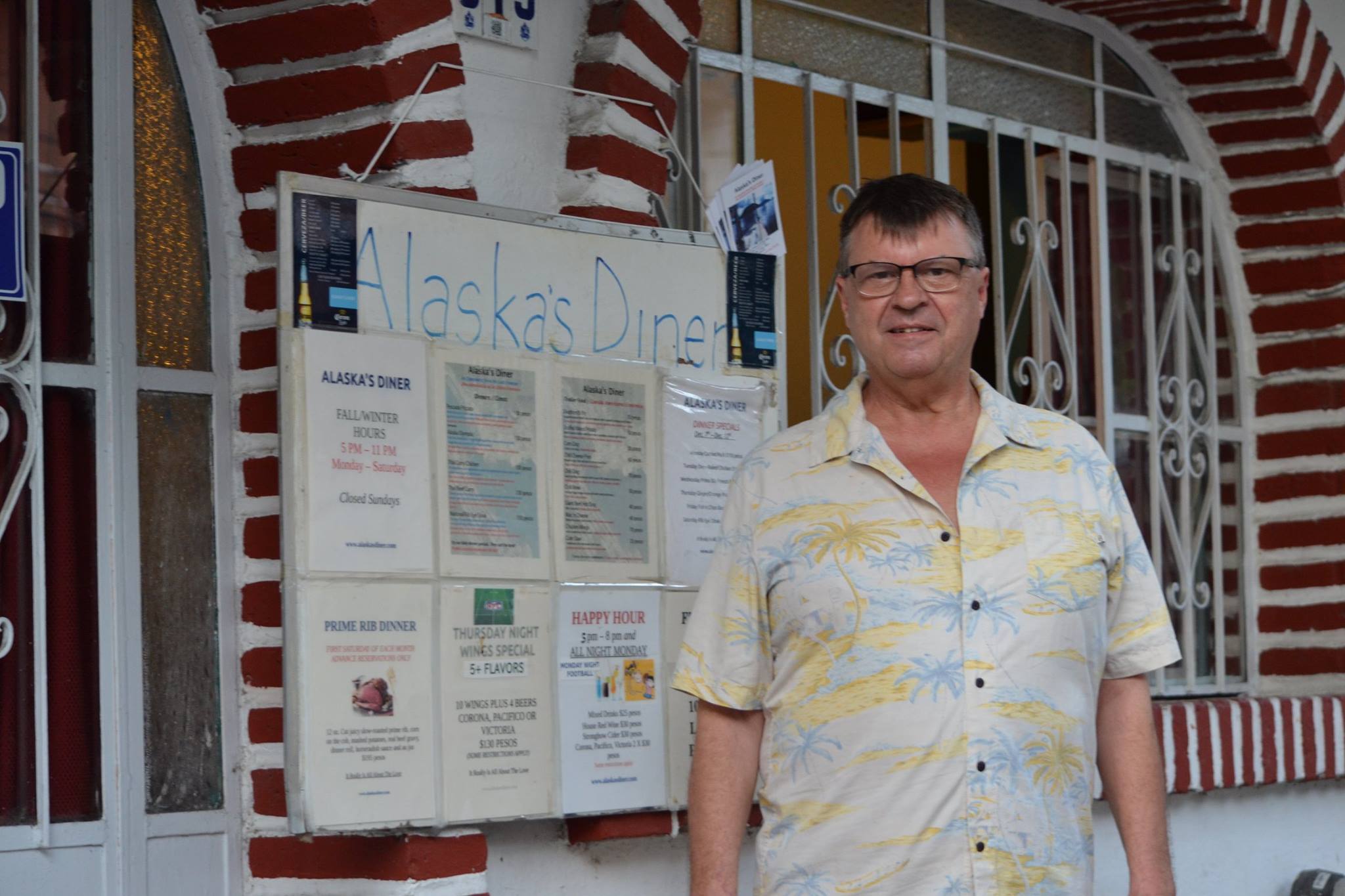
thing. I also like to seek out people who have taken a chance and opened a business in a foreign land. They seem to have the best stories. This next guest has a bunch of them.
Roger’s Favorite Restaurants
Breakfast
- The Salty Caesar, Puerto Vallarta, Mexico
- Que Pasa, Puerto Vallarta, Mexico
- Incanto, Puerto Vallarta, Mexico
- Cigar Factory, Puerto Vallarta, Mexico
Lunch
- El Rio BBQ, Puerto Vallarta, Mexico for Ribs
- Irma’s Restaurant in Paso Ancho, Puerto Vallarta, Mexico for Tamales
Dinner
- Que Pasa, Puerto Vallarta, Mexico
- Monchis Restaurant, Puerto Vallarta, Mexico
- Adobe’s Restaurant Puerto Vallarta, Mexico
- Martini en Fuego Restaurant Puerto Vallarta, Mexico
- Trio Restaurant Puerto Vallarta, Mexico
Coffee
Roger had a restaurant in Vallarta, it’s now closed, has been for a few years now, but I’ve always wanted to get him on the show. He lives in the same building as JR does, and I wave to him when I walk past his door on my way up to see JR, but I finally coaxed him into talking with me and sharing with all of you what it’s like to plan on moving and following your dreams. What it’s like to plan to open and build a business in Vallarta, and what it might be like to retire from it all right there in Puerto Vallarta.
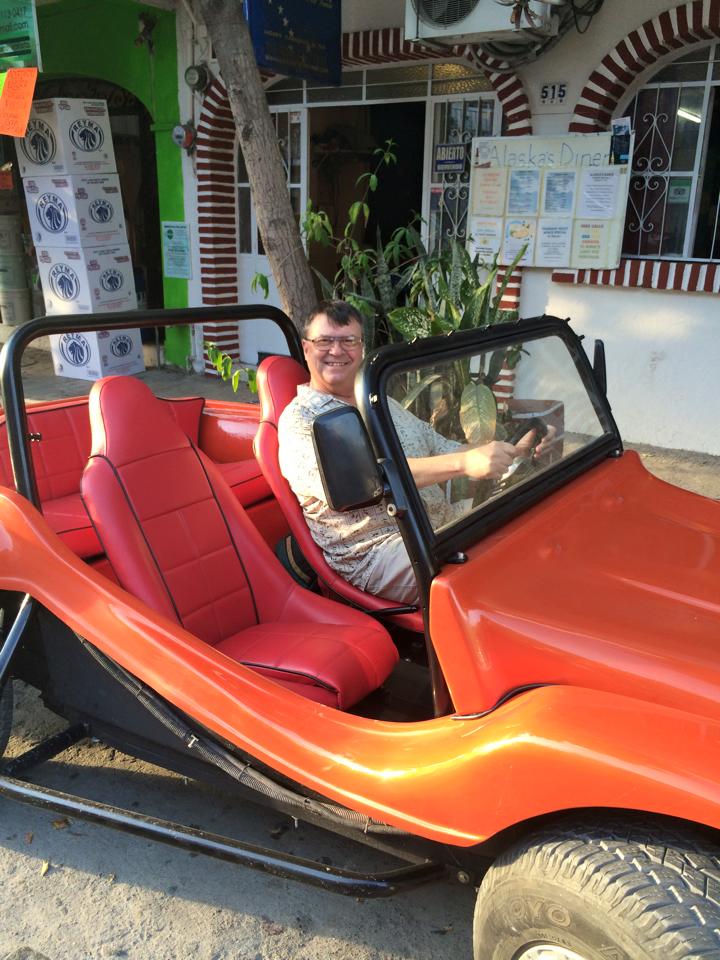
So let’s go right now, and hang out on the patio right in front of Roger’s condo, in colonia El Coloso in Puerto Vallarta Mexico, let’s meet Roger Alaska, from the old Alaska’s Diner, Puerto Vallarta, Mexico.
Listen to The Podcast
Okay, thank you Roger. Thanks for finally talking with me about your adventures. And for
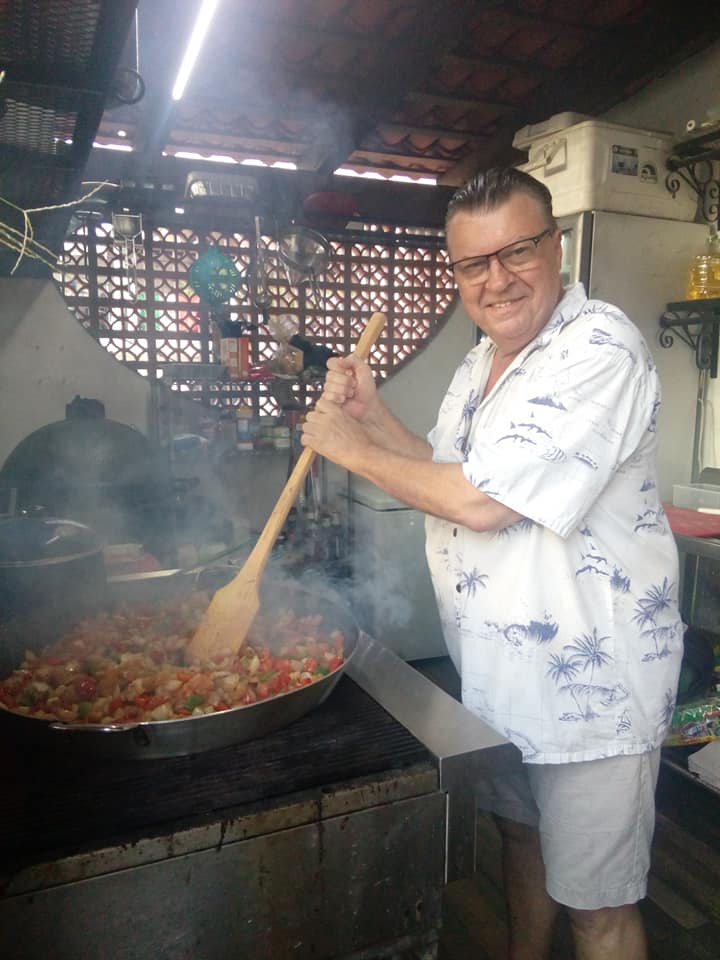
all of you thinking about opening your own business and maybe renting a place or hiring a contractor, what a lot of valuable information. Like watch them like a hawk. I have links to the places Roger talked about in the shownotes as well as a few pictures of the old Alaska Diner. A few of those pics have JR in them too. We will be on the lookout for Roger’s guest appearances as chef for a day…or week…or whatever.
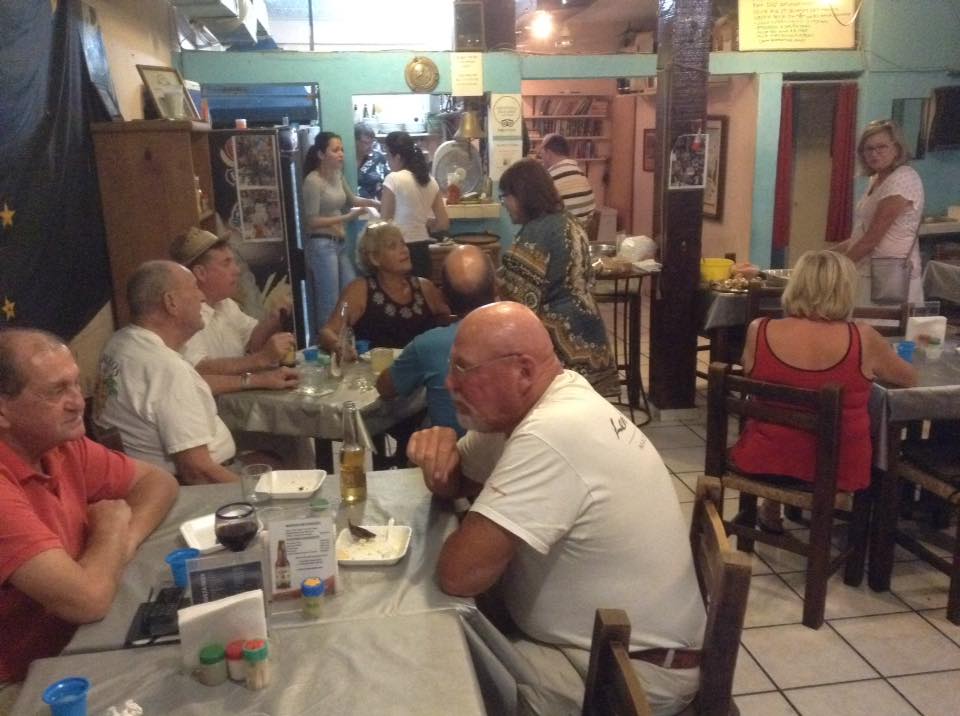
Okay, that should do it for this week,
Next week, stay tuned for more on the ground reports from Puerto Vallarta Mexico, with travel tips, great restaurant and excursion ideas and more. Until then, remember, this is an interactive show where I depend on your questions and suggestions about all things Puerto Vallarta. If you think of something I should be talking about, please reach out to me by clicking on the Contact us tab and sending us your message.
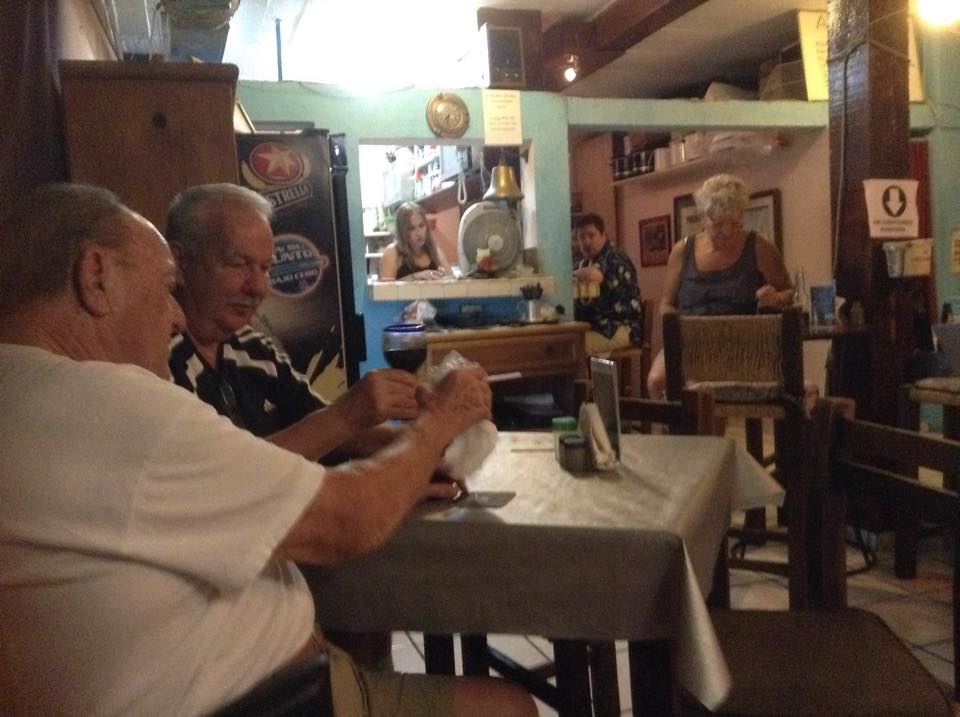
And remember, if you are considering booking any type of tour while you are in Puerto Vallarta, you must go to Vallartainfo.com, JR’s website and reserve your tour through him, right from his website. Remember the value for value proposition. His experience and on the ground knowledge of everything Puerto Vallarta in exchange for your making a purchase of a tour that you would do anyway, you’re just doing it through him as a way
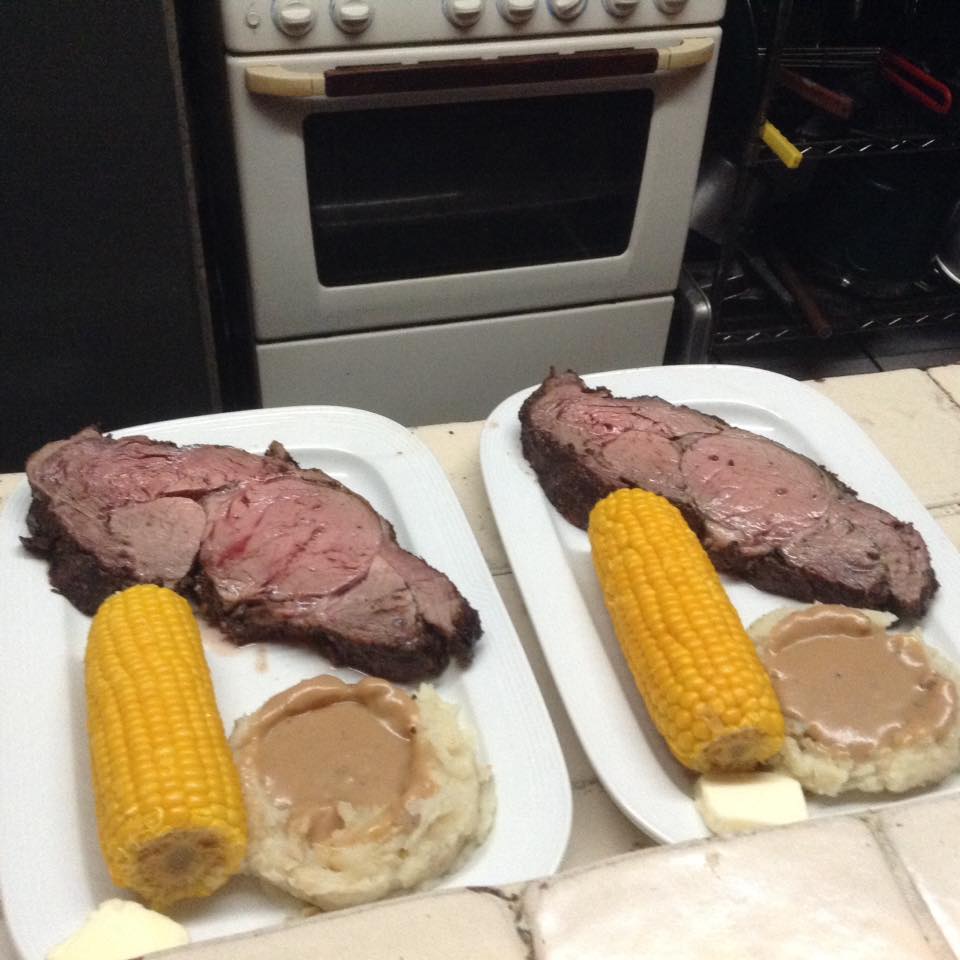
of saying thank you. It costs no more than if you were to use someone else so do it. Really. And when you do take one of these tours, email me about your experiences. Maybe you can come on-board and share with others what you liked or didn’t like about the tour. Again, contact me by clicking on the Contact us tab and sending off a message. Don’t forget his maps, his DIY tours and his revitalized Happy Hour Board. I have links to all of those in the show notes.

And once again, if you like this podcast, please take the time and subscribe and give me a good review on iTunes if you would. That way we can get the word out to more and more people about the magic of this place. Puerto Vallarta, Mexico. Remember I made it easy for you to do just that with each episode I create. But if you haven’t been to my website, you really need to have a look there. I have the links to the places we talk about, interesting pictures and the more all right there in my blog-posts and show-notes for each episode of the show so check them out for sure if you haven’t already all-right? All right.

Thank you so much to Roger Alaska. Thanks for talking with me and giving us some tips on how a Gringo may need to deal with Mexican contractors. Don’t make those mistakes folks. Thanks for sharing your memories and your story of course.
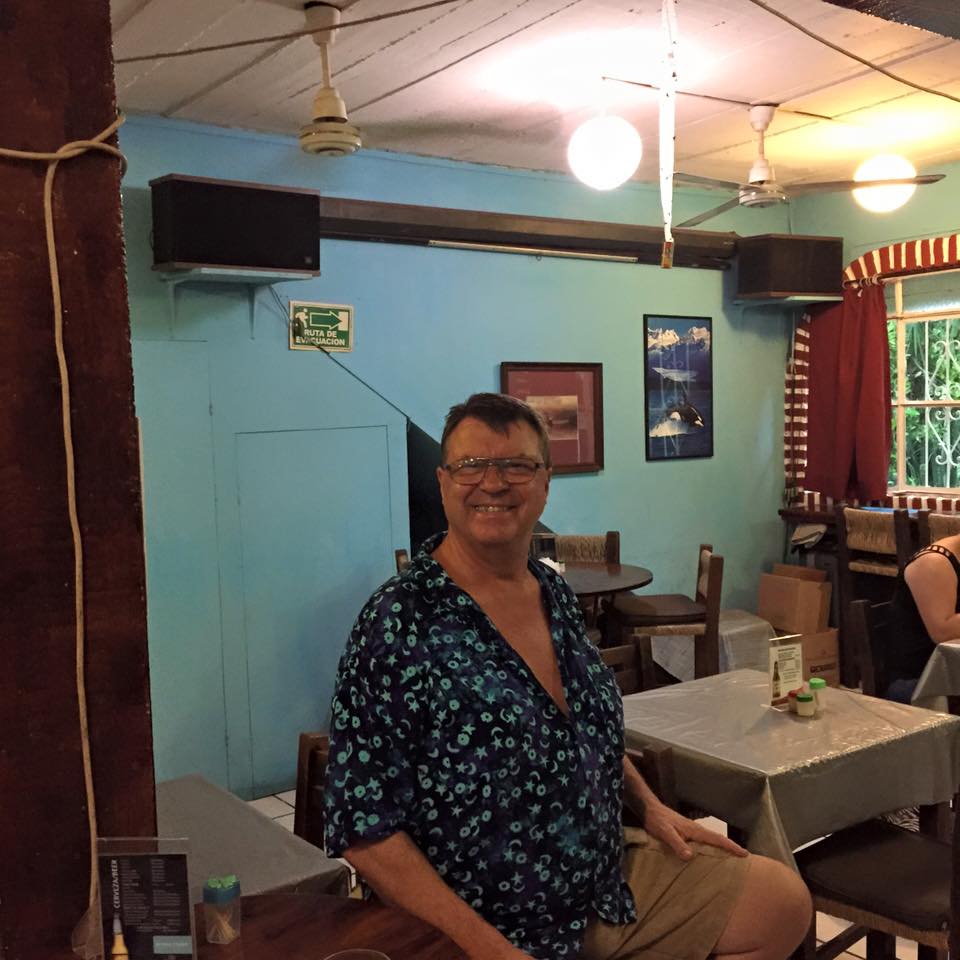
And thanks to all of you for listening all the way through this episode of the Puerto Vallarta Travel Show. This is Barry Kessler signing off with a wish for you all to slow down, be kind and live the Vallarta lifestyle. Nos Vemos amigos!
Listen to The Podcast